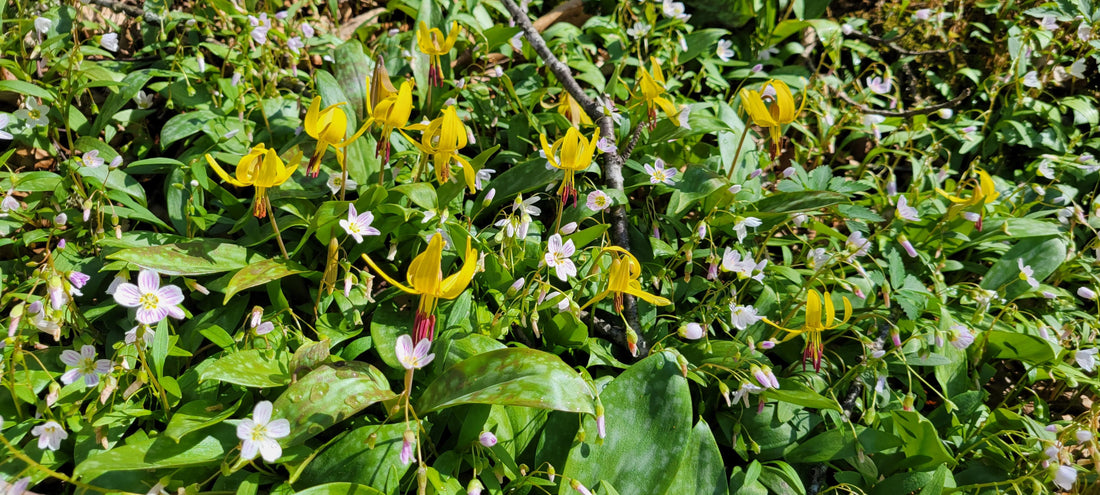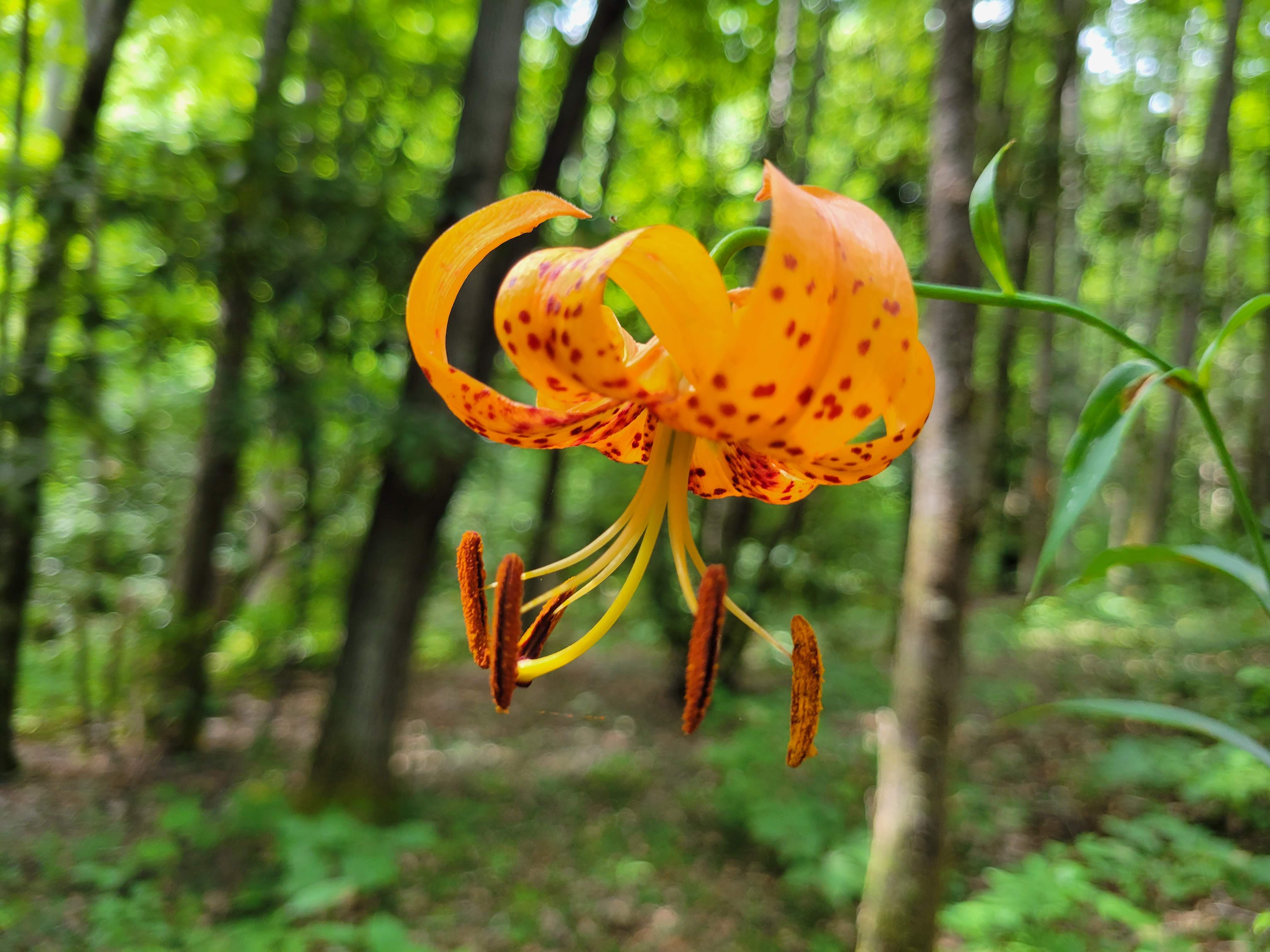
6 Best Places to Hike for Wildflowers
By Korrin Bishop
Wildflowers are often associated with spring, but in reality, colorful blooms pop up across parks from late winter through late fall. These floral displays are wonderful opportunities for nature photography and offer general delight to backcountry travelers.
Unfortunately, with the rise of social media, some wildflower areas have experienced damage from high visitation. Some rare species have also faced the challenge of poachers learning about their locations. When exploring these beauties, take precautions to leave no trace so people can enjoy the blossoms for years to come. Here are a few reminders to follow:
- Picking wildflowers disturbs their lifecycle, so look but don’t touch.
- Many flowers are hidden when they're not blooming, but can still get trampled by off-trail travel. It’s best to stay on trail to avoid accidentally crushing wildflowers as they move through their different growth stages.
- If you’re viewing rare wildflowers or ones known to be targets for poaching, consider obscuring your location if you choose to share your photos publicly.
While it’s nearly impossible to pick the “best” places for wildflowers, we’ve rounded up six public lands worth checking out. These offer a range of beautiful flowers nearly year-round. So, get out there and smell the roses… and violets, trilliums, azaleas, lilies, orchids, and… well, you get it!
1. Great Smoky Mountains National Park (Tennessee/North Carolina)
Great Smoky Mountains National Park is sometimes referred to as “Wildflower National Park.” It has more than 1,500 species of flowering plants, which is more than any other national park in North America. You’ll find wildflowers blooming here from late winter through late fall. If you miss a particular flower in the lower elevations of the park, you can often find them blooming again a couple weeks later a little farther up the mountain. Look for star chickweed in March, flame azaleas in June, and Turk’s-cap lilies in September.

2. Ice Age Trail (Wisconsin)
The Ice Age Trail is a 1,000-mile National Scenic Trail in Wisconsin carved by ancient glaciers. It travels through rocky terrain, open prairies, and thick forests. Its western terminus is in Interstate State Park in St. Croix Falls, Polk County, and its eastern terminus is in Potawatomi State Park in Sturgeon Bay, Door County. You can find wildflowers in spring, summer, and fall, such as round-leaved orchid, wild columbine, and purple milkweed. Check out the Wisconsin State Herbarium website for common wildflower blooms by month.

3. Black Star Canyon Wilderness Park (California)
Black Star Canyon Wilderness Park is located in eastern Orange County. It’s an access point to Cleveland National Forest and the northern Santa Ana Mountains. The area has diverse sage scrub and chaparral habitats. Beginning in March, hikers can find California lilacs, purple sage, owl’s clover, lupines, and chocolate lilies. Summer brings another range of flowers, including coastal pricklypear, laurel sumac, California buckwheat, and slender sunflower.

4. McKinney Falls State Park (Texas)
McKinney Falls State Park is a more than 700-acre nature area on the outskirts of Austin. It sits at the confluence of Onion Creek and Williamson Creek. Throughout spring, enjoy its many trails and picnic areas for colorful swaths of red Turk’s caps, bluebonnets, and rose-ring Gaillardia.

5. Oregon Caves National Monument and Preserve (Oregon)
Oregon Caves National Monument and Preserve is much more than a cave. Since incorporating its 4,070-acre National Preserve in 2014, the wilderness area encompasses several miles of hiking trails through beautiful meadows, forests, and lakesides. Peak wildflower blooms typically occur from mid-May through mid-July. Look for western columbines, Pacific trillium, red-flowering currant, and northern phlox, among many others.

6. Black Hills National Forest (South Dakota)
Black Hills National Forest has an array of wildflowers throughout its mountainous and prairie habitats. Look for pasqueflower—the official state flower of South Dakota—from March through May, Rocky Mountain iris from May through June, goatsbeard from May through August, dotted gayfeather from August through September, or purple coneflower from May through July.

Enjoy Wildflower Hikes From Spring Through Fall
What’s your favorite place to hike to see wildflowers? We’d love to see your flower-fueled adventures! Share with us your year-round favorites by tagging Gossamer Gear on social media (@gossamergear) and using the hashtag #takelessdomore.
Looking for more outdoor adventure inspiration? Check out some of our other articles on the Light Feet blog:
- 5 Great Rails-to-Trails Paths for Your Next Adventure
- How to Take Care of Your Gear Post-Hike (And Get Motivated to Do It)
- 8 Tips & Tricks for Solo Hiking Trips
- Hydration 101: Your Guide to Water While Hiking
- Learn the 7 Principles of Leave No Trace
- 5 Tips for Writing an Adventure Story of Your Own
---
Korrin Bishop is a freelance writer and editor with work published in Sierra, U.S. News & World Report, Southern Living, and Fodor's Travel, among others. Her writing focuses on outdoor adventure, environmental issues, travel, and nonprofits. Learn more about her writing and editing services at korrinbishop.com.
